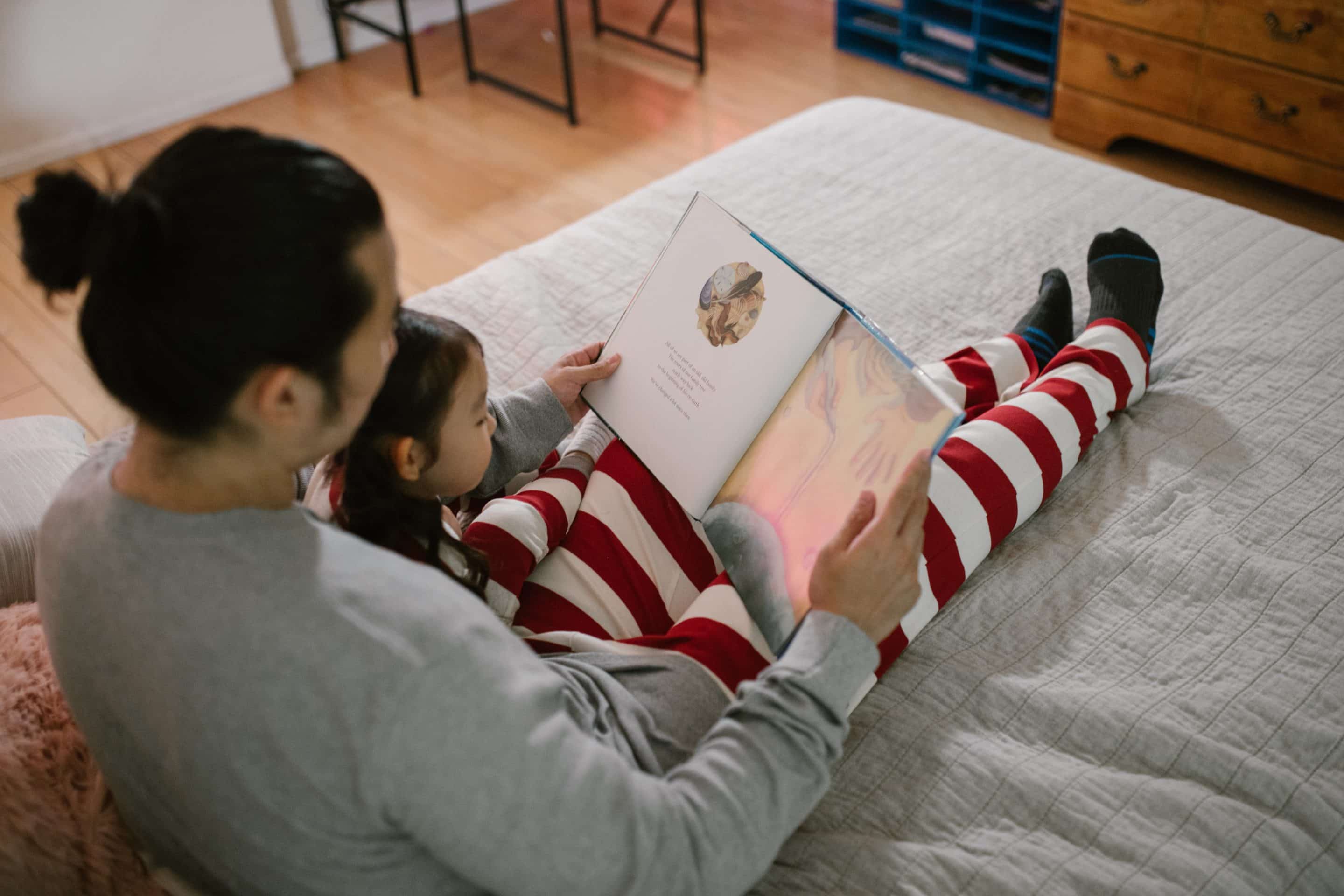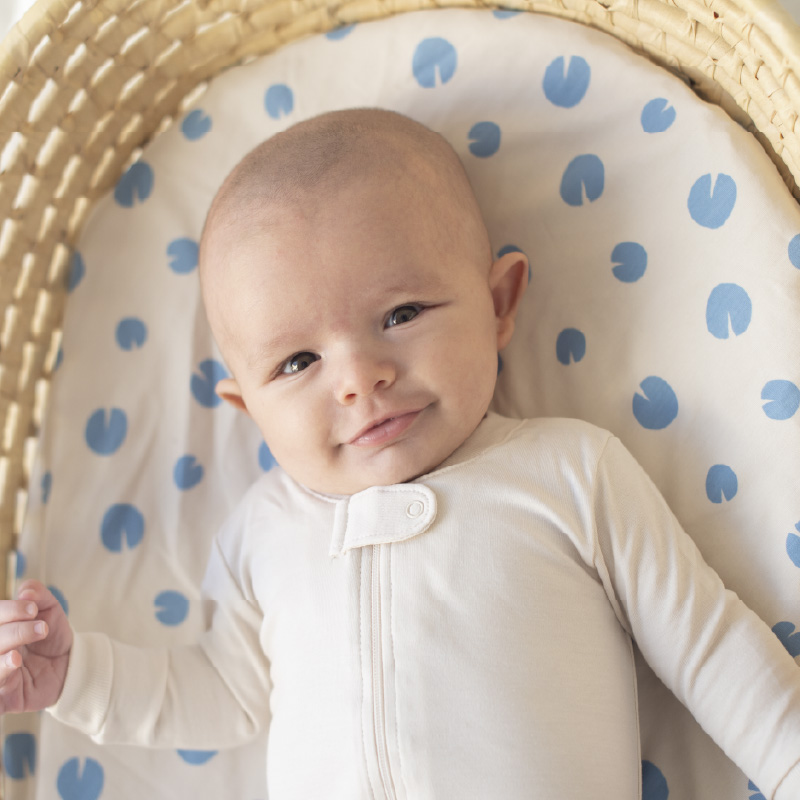If you have a young child, you probably already know mastering the art of sleep can be extremely challenging as a parent. It can feel frustrating when you know your baby needs to rest—but you just can’t get them to go down for a nap or stay asleep for the night.
Luckily, improving your kid’s sleep doesn’t require an entire overhaul of your child’s daily routine. Instead, you can implement small changes, one night or nap at a time—which will make the process of improving your child’s sleep routine easy and manageable—instead of overwhelming and stressful. Here are ten sleep habits you can try one at a time to improve your toddler’s sleep without pulling your hair out (or losing too much sleep yourself).
Move Bedtime Earlier
If your child isn’t sleeping through the night (or is having a hard time falling asleep), consider moving bedtime earlier. This may seem counterintuitive, but later bedtimes are actually associated with shorter and more fragmented toddler sleep. You don’t need to do anything drastic. Just try moving bedtime 30 to 60 minutes earlier. Don’t leap to an earlier bedtime in one night: start moving the bedtime back in 10 to 15-minute increments until you’ve hit the bedtime that’s right for your child. Stay consistent!
Limit Nighttime Screen Time
We all stressed about the time our children are spending watching screens and try to limit it. However, if you want to make sure your child can go down for the night easily, you want to make sure that you limit your kid’s screen time in the late afternoon and evening. The blue light from screens and the stimulating content, energizes your child and can make it hard for them to fall asleep. Consider implementing a no screens rule after dinner or at a set time each afternoon to help your child adjust. Allow your child to play in the bath, read books, play with their stuffed animals. Just avoid screen-related activities, and you’ll likely have a sleepier toddler at bedtime.
Choose the Right Nightlight
Nightlights are not essential for kids, since dark rooms are optimal for sleeping. However, night lights can be helpful for some children, especially if they feel afraid of the dark. They can also help ensure your child feels safe if they need to get up and move around in the night (i.e., go to the bathroom). If your toddler isn’t sleeping well, consider being specific about the type of nightlight you are using in their bedroom. Similar to the way screens affect children, blue lights in nightlights can also affect melatonin production and in turn, sleep quality. Replace any blue nightlights with red/orange/ amber lights. As your child is getting ready for bed, also keep the room dim. A dimly lit room with warm light has been shown to have a positive effect on sleep quality.
Lower the Room Temperature
Studies have shown that room temperature is not only important for baby sleep habits. It’s important for all of us. Make sure the room your baby sleeps in is cool enough before they go to bed. Just like for adults, scientists recommend a baby’s room be set to 68 to 72 degrees Fahrenheit when they are sleeping.
Make Sure the Room is Dark Enough
Darkness is another element that is easy to tweak and can improve the baby’s sleep habits you are struggling with. If you have a baby who sleeps in a crib and who is too young to move about (or be afraid of the dark), total darkness is really important for their sleeping. To ensure their room is dark, consider incorporating total blackout curtains that block any natural light from outside. Stopping sunlight or steel lights from getting into a nursery can help babies sleep longer in the mornings and also take better naps even when it is daytime outside.
Stick to a Regular Daily Schedule
For any child, a schedule is important. Create a healthy daily schedule that is age-appropriate for your child. Schedules are essential to help babies and children get better sleep. Of course, modern life and busy schedules are hectic; with things always going on, it can feel impossible to put your baby down for a nap or nighttime sleep and expect them to simply doze off. However, if you have a schedule that has points at which your baby always goes to sleep, day after day, their body will be primed for sleeping or napping, and it will make it much easier for your baby to fall asleep, no matter what else is going on during the day. Don’t forget to stick to your schedule, even on weekends.
Create a Bedtime Routine
A nightly bedtime routine is not only a key factor in promotion healthy sleep, but also of broad development and wellbeing in early childhood. The bedtime routine should should include a predictable set of steps that children can follow every night to let their bodies prepare for sleep. Ideally it should not be a long ceremony and should be enough with 20 to 30 minutes. (This might sound ridiculous to you if you’re a parent of a toddler whose bedtime routine somehow seems to extend to over an hour nightly—but just know that you’re not alone if implementing and getting your kid to stick to a bedtime routine regularly can feel exhausting!) If you’re not sure what to include in your bedtime routine, consider the following steps:
- Brush teeth and use the toileted
- Put pajamas on
- Read them a story or talk about the day
- Snuggle Before saying goodnight
- Lights out and good night
Whatever routine ends up working for your child, do it every night and keep the necessary boundaries with your child becomes resistant or challenging when going to sleep. A bedtime routine is comforting for your child and ensures they know what to expect when it’s time to go to bed for the night. This can get them into bedtime mode and psychologically prepared to climb into bed and fall asleep. Ultimately, whatever you include in your bedtime routine, know that sticking to it can let children know that it’s time to sleep, and that when it is officially time to sleep, we all need to stay in bed and let our bodies rest so they’re ready for the next day.
Spend a Little Time Together Before Sleep
Spending quality with your children is essential for them. In our daily routines it can be difficult to connect and stay tuned as a family. In at least the half hour before going to bed, try to leave phones aside and be present for your child. Let them know that there are no distractions, and you are there for them. Investing in real connection at bedtime can help reduce bedtime battles.
Get Morning Sunlight
Try to make part of the daily routine a little bit of outside time in the morning. Even 15 minutes of sunlight for your child can ensure that their body gets regulated and on a sleep cycle, and that they start to feel sleepy when they’re in the dark or the sun goes down. Sunlight is the strongest signal that our bodies get in the morning that keeps our circadian rhythms in sync with the rhythm of the day. So, spending time outside with your baby can help ensure their rhythm stays regular and consistent.
Increase Your Knowledge of Baby and Children Sleep Habits with Our Full Sleep Guide
One good way to make a few more tweaks to your toddler’s sleep habits is by taking a look at our Full Sleep Guide on Rockin’ Blinks. You can find a ton of information that can help you get started creating better sleep hygiene for your kids. If you need additional help, our sleep coaching services can help walk you through the process of getting your little one better at napping or sleeping through the night—so everyone at home feels happier and more rested. Learn more about our sleeping coaching here.
One-on-One Consulting
As a sleep consultant who has worked with hundreds of families, I know that sleep training is not one-size-fits-all. Each unique family needs their own unique sleep plan – and I am available to support and help your family on this journey.
Good sleep is essential for a happy healthy childhood and life. Book a consultation with us now!
Subscribe to our Newsletter and get the latest in sales, sleep information and more








